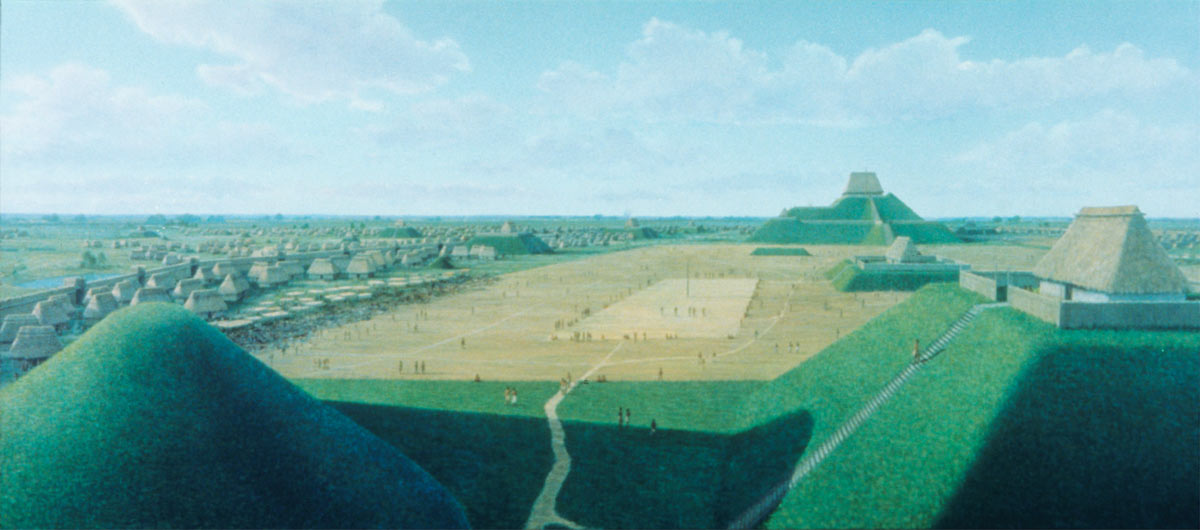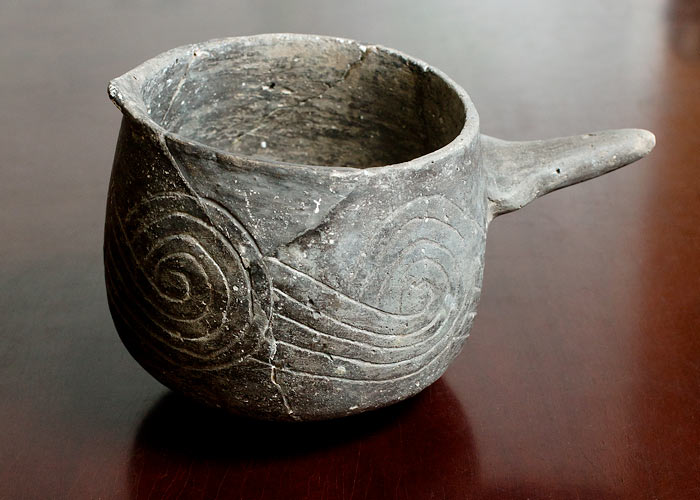The First US City Was Full of Immigrants

A sprawling city in the heartland of the United States was a cultural melting pot hundreds of years before Europeans ever set foot in North America.
A study of dozens of teeth found at Cahokia, an ancient metropolis near modern-day St. Louis, shows that immigrants moved to the city from across the Midwest and perhaps as far away as the Great Lakes and Gulf Coast regions.
Cahokia rose to prominence around A.D. 1050, when it underwent what some archaeologists call a cultural Big Bang. [Cahokia to Area 51: The 10 Strangest Places on Earth]
"All of a sudden, there's a giant rise in the size of the site," said study researcher Philip Slater, a doctoral candidate at the University of Illinois.
Countryside settlements were abandoned in favor of Cahokia's precincts along the Mississippi River. By A.D. 1100, as many as 20,000 people were living in an area covering 5.5 square miles (14.5 square kilometers), said Thomas Emerson, the director of the Illinois State Archaeological Survey.
"It contained more than two hundred earthen mounds, including the largest mound in North America, Monks Mound," Emerson told Live Science in an email. "Many of these mounds were topped by temples or the houses of the elites and were arranged around large ceremonial plazas where great community political, social and religious events were held."
Archaeologists have identified three large ceremonial precincts: one in modern East St. Louis, one at the current Cahokia Mounds State Historic Site and a third across the Mississippi River in St. Louis.
Get the world’s most fascinating discoveries delivered straight to your inbox.
"Interspersed in and around the ceremonial precincts were hundreds of thatched covered houses of the elites and commoners who were residents of this great pre-Columbian city," Emerson said.
Among some of the more intriguing archaeological finds at Cahokia are feasting pits with the remains of more than 100 deer that were cooked and consumed in a single event. Researchers have also found ancient beakers containing traces of "black drink," a caffeinated brew thought to have induced ritual vomiting.
Scientists had long speculated a wave of immigration contributed to Cahokia's boom. Slater told Live Science that the new study is exciting, because it provides the first direct evidence that a large share of Cahokia's inhabitants were indeed born elsewhere. [In Photos: Survival of an Ancient Civilization]
The study researchers used a technique called strontium isotope analysis. The element strontium occurs naturally in bedrock around the world, but different locations have their own unique isotopic ratios. Isotopes are atoms of the same element that have different numbers of neutrons. For example, strontium-86 has 48, while strontium-87 has 49. This strontium isotopic signature gets passed into soils, plants and animals in a given location, meaning the isotope ratios found in layers of tooth enamel can reveal where a person was born or grew up. This method has even been used to trace the ancient treks of human ancestors in Africa.
Slater, Emerson and another colleague examined 133 teeth from 87 individuals buried at different times across different locations at Cahokia, looking for a strontium isotope concentration that would match with the Cahokia region. Fully one-third of the residents came from somewhere else, according to the results, which are detailed in the April issue of the Journal of Archaeological Research.
"Even more surprising was the fact [that] immigrants were coming to Cahokia throughout its existence," Emerson said. "We had theorized that early in the creation of Cahokia there must be an influx. We had not realized that that pattern of in migration continued right up until Cahokia collapsed in the early 1300s."
The results also indicated that immigrants were integrated into Cahokia's society, as several non-locals were given prestigious cedar platform burials, suggesting a high status.
The researchers also examined teeth that came from a burial pit containing more than 50 individuals, most of them young women. Previously it had been hypothesized that the girls this mass grave were human sacrifices, offered as "tribute" to Cahokia from outlying communities. But 15 of 17 individuals whose teeth were examined were locals, the new analysis showed.
"This doesn't answer why they were put in the pit but it at least answers where they were coming from," Slater said.
More work is needed to determine the exact origins of Cahokia's large immigrant population.
"The burning question now is where do all these people come from? In order to answer that question we need to expand our studies of strontium across the midcontinental United States," Emerson said.
Follow Megan Gannon on Twitter and Google+. Follow us @livescience, Facebook & Google+. Original article on Live Science.





